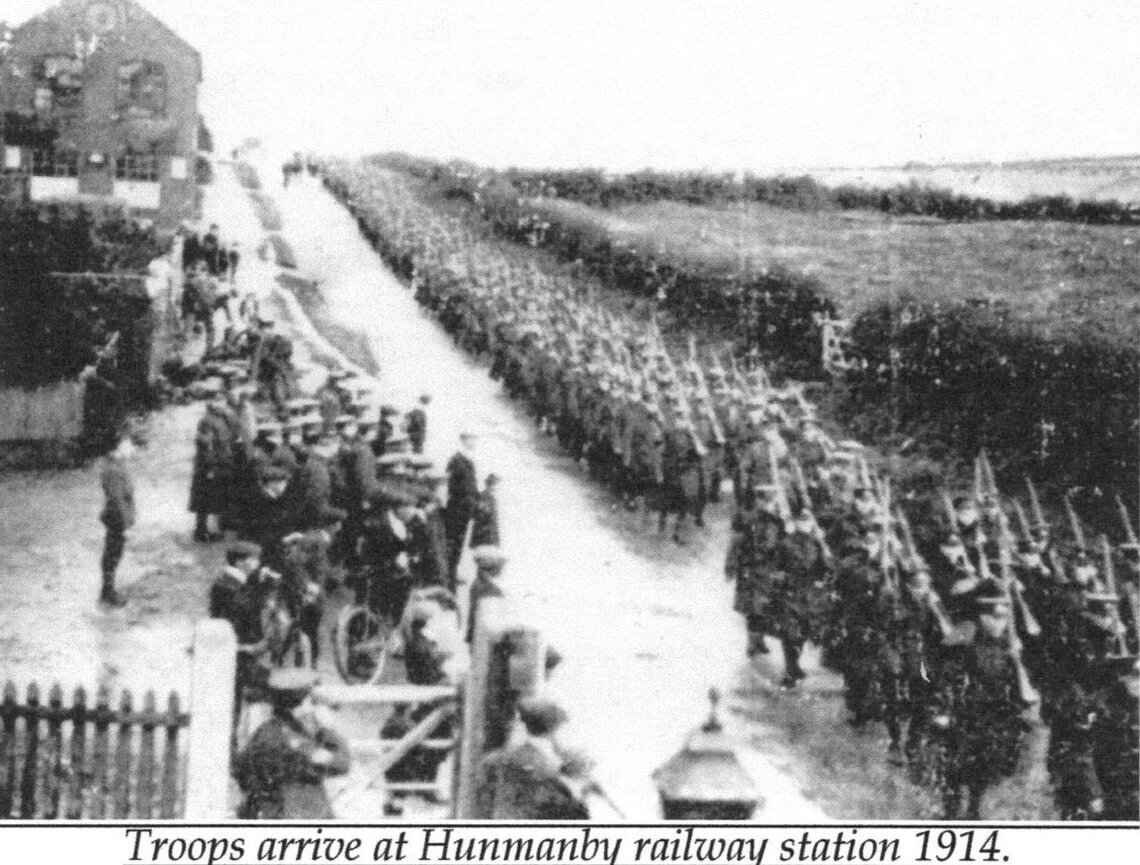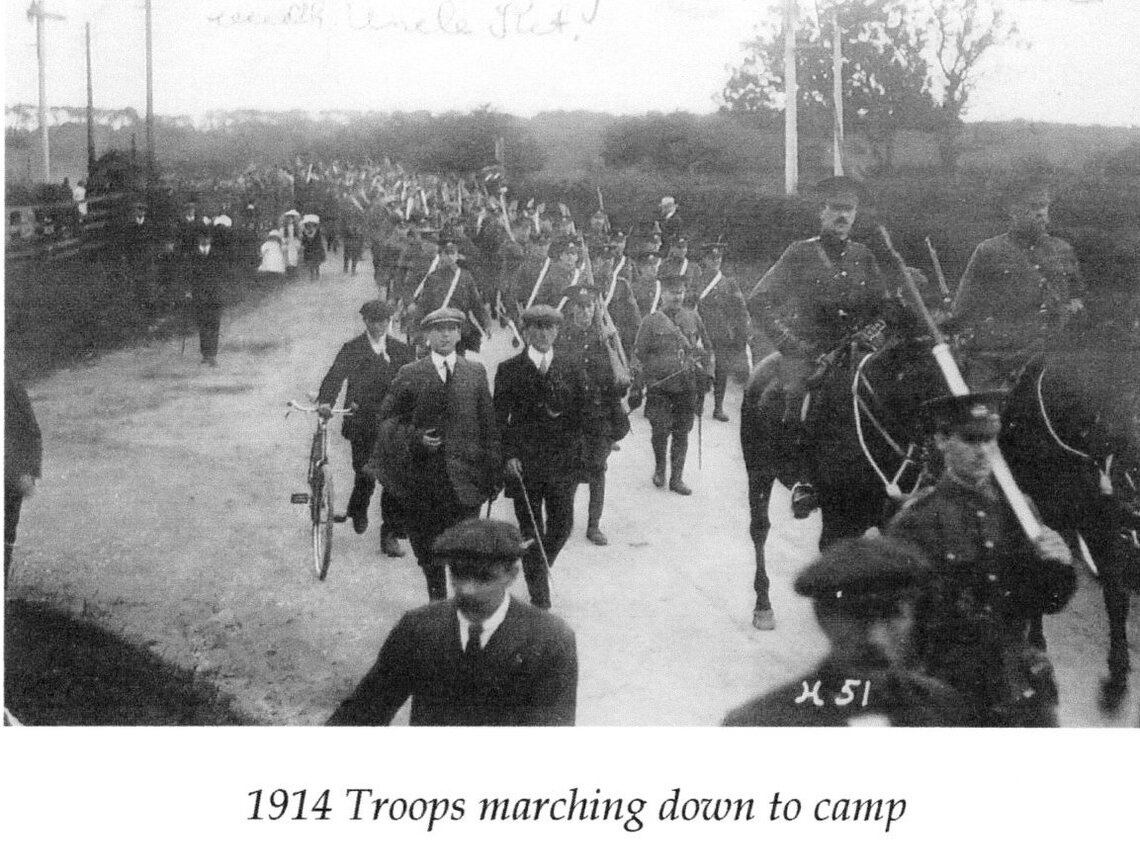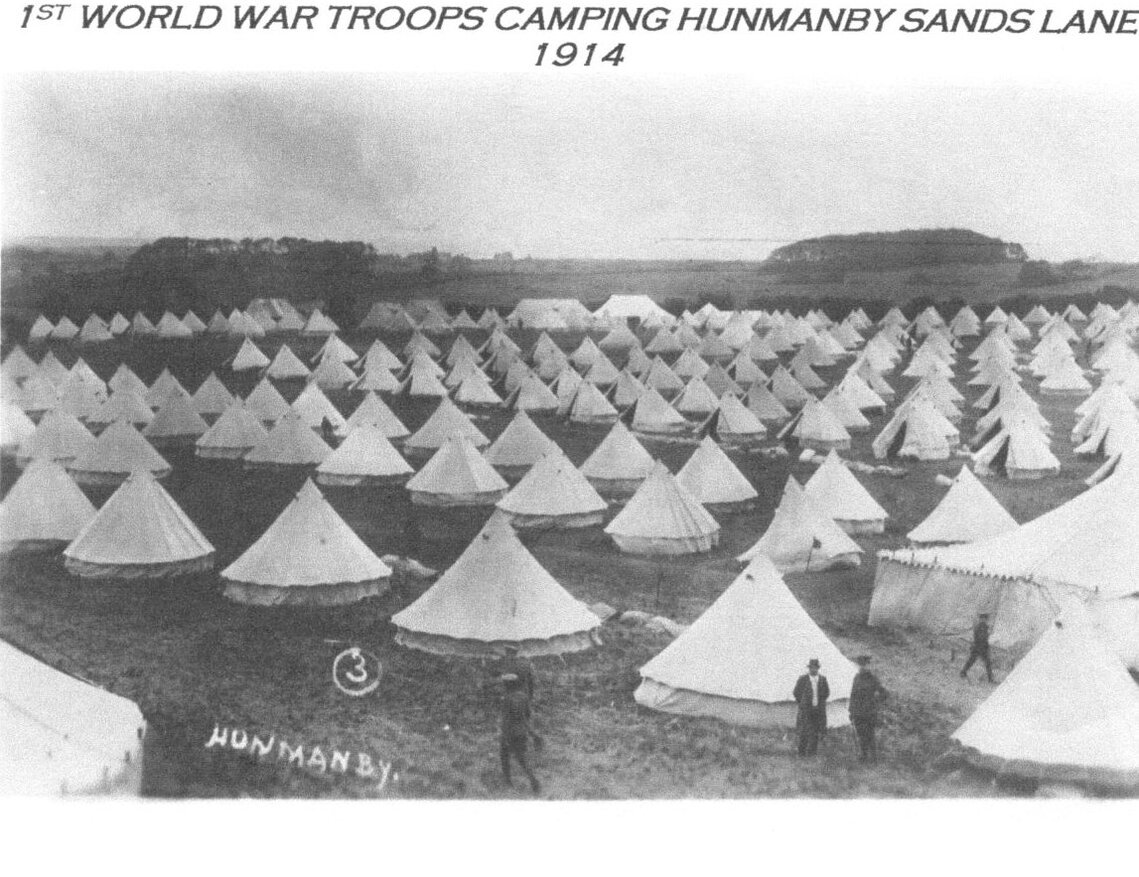The First World War - Hunmanby's part in the downfall of the Kaiser
With thanks to Brian Waining and Hunmanby Local History Group for the article
On 1st August 1914 Germany declared war on Russia and so began the first world war, on August 2nd Germany ordered her troops to enter French territory.
August 4th Britain declared war on Germany. On 16th December in the same year. Two German battle cruisers and a light cruiser, Derrflinger, Von Der Tawn and Kolberg. (Battle cruisers of Franz Von Hipper's Scouting Squadron) The two battle cruisers began bombarding Scarborough (later on to bombard Whitby and Hartlepool) with their 11 inch and 12 inch guns. Whilst the cruiser Kolberg was laying mines along the coast at Bridlington, Flamborough, Filet, Scarborough and Whitby.
The bombardment lasted 30 minutes. In that time 520 shells from the German war ships tore into Scarborough with over 200 buildings destroyed or damaged and eighteen people killed and many injured.
The British press made much of another instance of the Hun's brutality, but the suffering of non-combatants was not the purpose of the raid. The Germans hoped to tempt the British Navy into pursuing them over freshly laid minefields. Along the coastline at Filey a large crowd had gathered to witness the bombardment. (People of Hunmanby living on the higher ground in the village could see the bombardment even through heavy mist) also they observed the German cruiser Kolberg laying mines, this was reported to the coast guard, then reported to the naval authority.
A decision was made by the chief of the navy not to engage the enemy but just to observe.
During the 1st World War Scarborough and the East Coast suffered more attention from the Kaiser's fleet than is generally appreciated, and the threat from the sub-marine menace was partly influential in the decline of Scarborough as a port. Particularly as some ten to twelve trawlers were sunk offshore in one night.
Whilst in December 1917 Scarborough was again subject to enemy naval attack when a German U-boat surfaced some four miles offshore and bombarded the harbour with some thirty rounds of shells, half of which fell on fishing and pleasure boats.
(For more information about the bombardment of Scarborough and the towns Maritime History. The volunteer run Scarborough Maritime Heritage Centre is well worth a visit. This is the link to the Scarborough Maritime Heritage website
Troop arrive to Hunmanby
February 1914 Troops arrive in Hunmanby in special trains to Hunmanby Railway station, disembarked, then waited around until the next train arrived, four train in all. They formed up stretching well beyond the brow of the station hill (Bridlington Road)
The contingent included three marching bands. They formed up into separate companies led by their commanding officers and band. With the bands playing they marched down station road (Now Bridlington Street) turned right into Sands Lane, marched up Sands Lane over the railway crossing to the camp where the advance party had erected tents. They were the Durham Light Infantry, Hunts and later the Yeomanry regiments. Approximately 2,000 men.
The troops camped in bell tents, marquees etc. In two fields off Sands Lane near the Filey Reservoir (Rosedale/Reservoir Farm). There they dug trenches, had route marches, sham fights, church parades, complete with colours flying and band playing.
During 1914, just before the war started, a drive was made in Hunmanby (and all over the country) to recruit men to join the Territorial's as reservists. The regulations were that they should do so many hours training. For this a sergeant came over from the barracks at Scarborough or Bridlington and put them through their paces. Also, each year they had to spend two weeks at Catterick camp. For this they were paid yearly a fastener fee of one pound in advance. They were measured and given uniforms and after a few weeks they were each given a dress uniform.
If you have more information or are interested in History, this is the link to Hunmanby Local History Group Facebook page
Updated 21.10.2021



